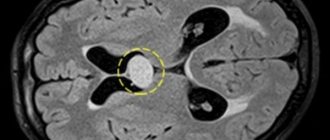What is botulism?
Botulism is a dangerous infectious disease that develops as a result of the ingestion of the waste product of the bacterium Clostridium botulinum - botulinum toxin - into the human body. The disease is quite rare these days, with about 1,000 cases recorded per year worldwide. The disease continues to be deadly. Its main source is food, although others stand out.
Incubation period
On average, the incubation period of the disease can last from several hours to one day. Its duration is determined by the amount of infection in the body. The period from poisoning to the appearance of the first signs of botulism can reach up to 2-3 days and even up to 10 days, but such cases are quite rare. There have been cases where the duration of the incubation period increased due to the patient's consumption of alcohol.
Manifestations of the disease most often have a sudden nature, strongly reminiscent of the symptoms of food poisoning. The toxin from contaminated foods is rapidly absorbed into the intestines, enters the bloodstream and instantly spreads throughout the body. In this case, vital organs become targets of damage.
The sooner botulism makes itself felt, the more severe the course of the disease turns out to be.
Is botulism killed by boiling?
It is customary to distinguish two forms of existence of botulism bacteria - spore and vegetative. To destroy the vegetative form, it is enough to boil the product for five minutes. The spore variety demonstrates greater resistance to boiling; it can withstand this procedure for about five hours. Only after this do the botulism spores die if the temperature reaches the desired level.
Vegetative forms of botulism, even with slight warming, have the ability to produce spores, nicknamed “dormant”, the germination of which occurs after about six months. Such spores show resistance to drying, freezing, and ultraviolet rays. Airless conditions are optimal for their development.
Boiling is the most reliable way to protect canned foods for the human body. Bacteria are not subject to acidic environments, it is useless to fight them with a high content of table salt, they cannot be eliminated by enzymes of the digestive tract. Only boiling is an effective preventive measure.
At what temperature does botulism die?
Temperatures sufficient to kill botulism bacteria depend on the form in question.
- Vegetative bacteria are not able to cope with temperatures of 80 °C for more than half an hour. Also, boiling for five minutes is enough to completely eliminate them.
- Disputes are more stable. To get rid of them, it is necessary to place the bacteria in a temperature of 120 degrees and maintain this value for at least half an hour. For certain strains this is not enough.
First aid
Having identified signs of botulism, you must immediately call an ambulance and provide first aid to the victim. To do this, it is necessary to perform gastric lavage, but the patient must be conscious and respond adequately to the environment (if the patient loses consciousness, vomit may enter the lungs).
It is necessary for the patient to drink at least a liter of boiled water, and then artificially provoke gag reflexes (you can stick your fingers down your throat). The procedure must be performed several times until the patient’s vomit consists of only water. It is advisable to carefully collect a small amount of primary vomiting in some container; it will be useful for further medical tests to identify the toxin.
The first signs of botulism poisoning
The first symptoms of botulism are nonspecific, short-term in nature, and reflect manifestations of infectious intoxication and acute gastroenteritis.
The patient may be concerned about the following problems:
- severe abdominal pain, concentrated mainly in the central part;
- attacks of headache;
- manifestations of diarrhea (approximately 3-5 times a day, up to 10);
- repeated vomiting;
- weakness, fatigue, malaise;
- increase in body temperature up to 40 °C.
Towards the end of the day, the temperature returns to normal, persistent constipation replaces excessive activity of the gastrointestinal tract. These “improvements” should not be deceiving; you should definitely consult a doctor.
Diagnosis of the disease
When all the signs of botulism occur, you should not self-medicate and expect that everything will go away on its own. You should consult a doctor immediately!
Since neurological symptoms are actively developing, you should consult a neurologist. After the initial examination, the doctor will prescribe specific laboratory diagnostics. Please note that in the early stages of the development of the problem, determination of infection by laboratory methods has not been developed. Therefore, the diagnosis is made based on the clinical picture and general history.
Photo source: shutterstock.com
When the disease is at its height, the presence of a toxin in the blood can be detected. For this purpose, HGUF with an antibody diagnosticum is used. Special tests are performed. Thanks to immunofluorescence diagnostics, antigens are detected. This analysis is ELISA. PCR and RIA are also often prescribed.
Symptoms of botulism and their manifestations
The general symptoms of botulism are characterized by variability and are determined by the course of the disease and its stage. It is customary to distinguish three options: gastrointestinal (the most common), “ocular”, acute respiratory failure.
At the initial stage of development of botulism, manifestations of the gastrointestinal version of the disease can easily be confused with symptoms of food poisoning:
- vomiting (single, double);
- cramping pain felt in the upper abdomen;
- diarrhea (diarrhea);
- excessive dryness of the oral mucous membranes, which has no normal explanation.
This option is also characterized by normal or slightly increased body temperature, a feeling of a “lump” in the throat, associated with poor passage of food through the esophagus.
The “ocular” variant of the onset of botulism is less common; characteristic manifestations are as follows:
- visual impairment;
- lack of clarity of the contours of objects;
- grids, fog, “flies” floating in front of the eyes;
- the effect of farsightedness, in which the patient sees near objects poorly, while distant objects are clearly visible.
In acute respiratory failure, there is a rapid spread of obvious disturbances in the respiratory process. The patient may have:
- respiratory “failures” (changes in number, rhythm, tempo);
- blue skin;
- increased heart rate;
- shortness of breath.
At the height of the disease, it is possible to experience combinations of symptoms from all the groups listed below.
The patient has the following difficulties with swallowing:
- It does not respond to solid foods first, then to liquid foods;
- the tongue in the pharynx remains absolutely motionless;
- the tongue also becomes inactive.
A patient may experience eye symptoms of botulism at its peak:
- seeing double;
- eyelids droop;
- convergent strabismus appears;
- it is difficult or impossible to keep your gaze in one direction.
Disturbances in sound pronunciation are also considered characteristic of this stage. Among them, the following manifestations are possible:
- loss of speech associated with immobility of the vocal cords;
- nasality;
- feeling of “porridge in the mouth”;
- hoarseness.
Botulism, which is at its peak, can also indicate itself through indirect manifestations:
- unsure gait;
- pronounced muscle weakness;
- problems with urination, constipation;
- feeling of dry mouth;
- pale skin;
- rapid pulse.
Rare, but still common symptoms: the inability to show teeth, make a grin, tension in the facial muscles, a distorted face. At the same time, the patient’s body temperature does not increase, his hearing remains fine, his thoughts remain clear, and there are no problems with skin sensitivity.
When the disease enters its final phase, respiratory dysfunction predominates. Patients feel short of breath, are forced to interrupt the conversation with pauses, and a feeling of constriction or tightness arises in the chest. Respiratory failure increases due to the frequent development of pneumonia.
The final period is characterized by complete relaxation of the skeletal muscles, its doughy appearance. Patients are unable to hold their head up and their movements become very limited. Despite clear consciousness, complete immobility occurs, and respiratory paralysis causes death.
If the patient does not receive proper treatment, he is at risk of the following complications and consequences.
- Secondary bacterial complications. These are atelectasis, pneumonia, pyelonephritis, purulent tracheobronchitis, sepsis.
- Specific complications. Damage to the cardiac nerve nodes, development of arrhythmia, myositis affecting the occipital, femoral, and calf muscles.
- Iatrogenic complications (post-treatment). Among them are hyperglycemia, intestinal atrophy, serum sickness, and hyperphosphatemia.
On average, the illness can last 3 weeks if the patient receives proper treatment. Restoration of neurological symptoms occurs in the reverse order, first breathing is normalized, then swallowing is restored. Other manifestations of the disease - nasality, headache, and so on - can remain for up to 1.5 months. In people who have recovered from botulism, the symptoms disappear without a trace, and there is no need to fear disabling complications.
Causes of botulism
The causes of botulism in humans depend on what form we are talking about. The disease may be:
- food;
- wounded;
- "respiratory";
- "childish";
- to others.
Food botulism
Clostridium botulinum is known as an anaerobic bacterium; its growth occurs exclusively when oxygen is absent. Food hazards occur when bacteria grow and produce harmful toxins in food before consumption. Bacteria produce spores that are common in the environment, including sea and river water, and soil.
The formation of bacteria and the production of toxins are observed in products under conditions of low oxygen concentration and require a certain combination of preservation conditions and storage temperature. In most cases, this affects lightly preserved food products, not subjected to the necessary processing, prepared at home.
An acidic environment is not conducive to toxin production, however, previously produced toxin cannot be destroyed in it. Storing at low temperatures and achieving a certain concentration of acidity and salt can prevent the growth of bacteria.
Botulinum toxin has been found in many foods. Among them are canned low-acid vegetables - beets, mushrooms, spinach, green beans. The danger is represented by sausages and ham, fish, smoked and salted, and canned tuna. The list of “prohibited” dishes depends on the state, local nuances of conservation and nutrition. There are known cases of bacteria being detected in the results of industrial production.
Wound botulism
This form of the disease is much less common than foodborne botulism. It is caused by spores that penetrate an open wound of a patient and are capable of reproducing in such conditions. Signs of the disease are in many ways reminiscent of the manifestations of the food form and may appear after two weeks. The risk group is represented by people suffering from drug addiction; heroin injections are especially dangerous.
"Children's" botulism
This form mainly affects infants under six months of age. Infant botulism results from a child ingesting spores, which release bacteria that invade the intestines and produce toxins. After 6 months, children practically do not encounter this form, and it is not dangerous for adults either. This is explained by the fact that the germination of pores is prevented by natural protective mechanisms that the body acquires later.
There are several sources of infection, the most famous and dangerous of which is honey. That is why doctors do not recommend feeding this product to children under one year old.
Symptoms of the disease in infants also differ:
- inability to hold the head;
- hoarse crying;
- lack of appetite;
- weakness;
- problems with stool;
- deterioration of the sucking and swallowing reflex.
House dust and soil also pose a threat to children. The childhood form is characterized by a long incubation period, babies are more susceptible to complications such as pneumonia, and the risk of death increases.
"Respiratory" botulism
This form of the disease develops extremely rarely. Its appearance in natural conditions is not possible; it is influenced by deliberate (biological terrorism) and accidental events associated with the release of toxins in aerosols. The same clinical manifestations are characteristic as those that can be observed with food-borne botulism. The speed at which the first symptoms appear depends on the level of poisoning, on average it takes 1-3 days.
Other forms
Theoretically, it is not impossible for the disease to spread through water if a previously produced toxin is ingested. However, the danger is minimal, since wet processing causes the destruction of bacteria. Doctors make a diagnosis of “undetermined botulism” if they cannot determine the source that provoked the wound or food form of the disease in the patient.
Pathogenicity factors
Species C. botulinum
forms exotoxins that differ in antigenic properties and are divided into serotypes on this basis. Botulinum toxins of all types have similar biological activities, being variants of a single neurotoxin. In addition to its neurotoxic effect, botulinum toxin has leukotoxic, hemolytic and lecithinase activity.
Botulinum toxin
7 known antigenic variants
botulinum toxin: A, B, C (subtypes C1 and C2), D, E, F, G. Toxin formation of types C, D, E is encoded in the genome of convertible bacteriophages and manifests itself upon integration of the prophage into the bacterial chromosome; in other types, genetic control is exercised directly by the cell chromosome.
Human diseases are caused by botulinum toxins types A, B, E, and F. In the human body, C. botulinum
They reproduce weakly and do not produce toxin, with rare exceptions.
Botulinum toxin accumulates in food products infected with C. botulinum
during their germination if anaerobic conditions are created (for example, during canning).
For humans, botulinum toxin is the most potent bacterial poison, having a detrimental effect at a dose of 10−8 mg/kg. C. botulinum
spores can withstand boiling for 6 hours, high pressure sterilization destroys them after 20 minutes, 10% hydrochloric acid after 1 hour, 50% formaldehyde after 24 hours[3]. Botulinum toxin type A (B) is completely destroyed when boiled for 25 minutes.
The toxin is a polypeptide chain with one or more intramolecular bonds, its molecular weight is 150,000, it belongs to binary toxins.
Botulinum toxins of all types are produced as toxic protein complexes consisting of a neurotoxin and a non-toxic protein. Protein is a stabilizer of the toxin, protecting it from the destructive effects of proteolytic enzymes and HCl.
Botulinum toxin in the form of a high-molecular complex is low-toxic and is a prototoxin. As a result of mild proteolysis, carried out in most types of toxin by its own endogenous proteases, and in type E by exogenous proteases (for example, trypsin), the prototoxin breaks down into 2 subcomponents: L-light and H-heavy. A disulfide bond remains between them. The L-sub-component corresponds to fragment A (activator) and has a toxic effect on the target cell (motoneuron). The H-subcomponent corresponds to fragment B (acceptor) and attaches to the target cell receptor.
Use of botulinum toxin
Botulinum neurotoxin type A-hemagglutinin complex is used in modern cosmetology under the trade names “Botox”, “Dysport”, “Relatox” and “Lantox”.
Prevention of botulism
In recent years, cases of botulism in Russia have mainly been associated with poisoning from home-cooked canned foods. Therefore, preventive measures relate primarily to this area. The safety of the “jars” cannot be determined by eye; botulinum toxin does not lead to changes in the color, smell or taste of food.
- Products that serve as the basis for making home-canned foods must be thoroughly cleaned of dust and dirt. It is advisable to remove soil particles with a brush.
- The same applies to canning utensils - jars, lids. Products must be washed, scalded and dried. Tin lids need to be boiled.
- There are foods that doctors advise you to completely avoid canning at home. These are meat, fish, mushrooms and greens. Mushrooms are especially dangerous; according to statistics, they account for approximately 70% of all cases of botulism. Meat and fish can only be canned if an autoclave is used; the products must be fresh.
- Overripe, stale, spoiled fruits and vegetables cannot be used.
- Immediately before eating, it is advisable to boil such food for half an hour, this will eliminate any toxins that may have formed. This rule is especially important for children sensitive to botulinum toxin.
- The storage temperature of products that cannot be heat treated should not exceed 10 °C. We are talking about fish, salted and smoked, sausages, lard.
- Swollen cans will certainly be selected and destroyed.
- Vegetables or mushrooms rolled in homemade jars are strictly prohibited from being bought from strangers in markets.
- If one of the family members falls ill, all members of the household who ate the same food as him or her need to be administered a preventive serum and medical supervision for 10 days. It is imperative to disinfect the dishes from which the patient ate and his clothes.
When it comes to wound botulism, the only preventive measure is proper wound treatment in the hospital.
History of the study
These bacteria were first identified in 1895 by the Belgian microbiologist Emil van Ermengem, a student of Robert Koch. However, the first mention of the botulism they cause dates back to 1793, when in Germany, after eating smoked blood sausage, 13 people fell ill, 6 of whom died. Similar food poisoning from sausages, with large numbers of deaths, was observed in Germany during the Napoleonic War in 1795–1813. It was then believed that this mortality was due to the lack of food hygiene in the villages due to the war[2].
The first scientist who began collecting statistics on cases of such poisonings and their symptoms was Heinrich Ferdinand Autenrieth from the University of Tübingen. His list of symptoms, published in a newspaper in 1817, included gastrointestinal disturbances, double vision, and dilated pupils. Autenrieth also discovered a connection between the strength of the poison and the degree of frying of the sausage.
One of the doctors who presented the professor with descriptions of cases of poisoning was the doctor and writer Justinus Kerner. Subsequently, Kerner devoted a significant part of his life to the study of botulinum toxin and is considered the godfather of its research. Conducting tests on animals and on himself, he tried to isolate an unknown toxin from sausage, which he himself called “sausage poison”, “fatty poison” or “fatty acid”. The results of these studies were published by him in 1822 in a monograph describing 155 cases of poisoning in humans and experiments on animals, according to which it was concluded that the effect of the toxin was to disrupt impulse transmission in the fibers of the peripheral and autonomic nervous systems. Kerner also suggested the biological origin of this poison based on the similarity of the action of the toxin with the action of atropine and snake venom.
Subsequently, the disease resulting from poisoning with the toxin he described received the name “botulism” from the Latin. botulus, meaning "sausage".
Treatment of botulism
Every person suspected of having botulism of any severity is immediately hospitalized, since the possibility of complications and the nature of the course of the disease cannot be predicted. Such patients are not dangerous to others; the disease is not transmitted by airborne droplets.
The likelihood of a sudden drop in blood pressure and pronounced muscle weakness are the reasons why patients are prescribed strict bed rest. If the case is severe, the patient is fed intravenous nutritional formulas or a nasogastric tube is used. The therapeutic menu in mild cases involves avoiding foods rich in extractive elements, fatty and spicy foods. The patient is prescribed diet No. 10.
The question of whether a patient admitted with botulism needs immediate ventilation is decided by the doctor in the emergency department. It is respiratory “failures” that pose the greatest danger to the life of such patients, so adequate ventilation plays an important role.
If there is a threat of developing acute respiratory failure, patients need to establish the vital capacity of the lungs and constant pulse oximetry. There are frequent cases of acute respiratory failure developing at an incredible rate. The question of the need for ventilation and intubation arises if the vital capacity of the lungs is reduced by less than 30%, paralysis progresses rapidly, and hypercapnia and hypoxemia are present. The patient may need ventilation and intubation from several days to several months.
If a patient experiences urinary retention, he is prescribed catheterization through Foley catheters. This avoids the development of an ascending urinary infection.
If the patient does not have obvious respiratory disorders, the doctor resorts to emergency detoxification technologies. Washing the intestines and stomach are procedures of paramount importance; they help destroy the toxin and get rid of the substance that has not yet been absorbed. The first rinsing is done using clean boiled water, its samples are then subjected to specific analysis.
The patient is not prescribed laxatives to avoid activation of intestinal paresis and the development of neuromuscular disorders. A tube is used to lavage the stomach; the portions of liquid should be small, especially if the patient has respiratory failure. Otherwise, there is a risk of reflexive respiratory arrest.
If the patient has bulbar disorders, insertion of the probe should be carried out as carefully as possible, using a laryngoscope. This makes it possible to avoid penetration of the probe into the trachea, which is important due to the absent gag reflex and paresis of the muscles of the palate.
Gastric lavage is prescribed at any time during the patient's hospitalization. However, a severe condition in which serious respiratory disorders are observed may force the doctor to limit himself only to intestinal lavage and ventilation of the lungs. In this case, flushing begins with a siphon enema, which leads to a reduction in abdominal bloating and provides the necessary conditions for lung excursion. As a result, gastric lavage is easier to tolerate for patients with botulism. Siphon enemas are given daily, the procedure is repeated twice a day if there is severe bloating.
The next task is to neutralize the toxin circulating in the blood. At any stage of botulism, the patient is injected with heterogeneous anti-botulinum serum. A supraclavicular vein catheter is used to insert the PBS.
Severe cases
Anaphylactic shock is considered the most dangerous complication that can occur in a patient during botulism therapy. The condition can occur immediately, regardless of strict adherence to all important rules. In addition, some patients who have undergone serotherapy develop serum sickness after 7-10 days.
If the course of the disease is severe and progresses immediately, PBS is administered intravenously. After 12 hours, a similar dose is administered intramuscularly. You can inject the serum a third time after 24 hours. The drug cannot be prescribed more than 4 times.
Hyperbaric oxygen therapy is an effective treatment technology that allows tissues to be under high partial pressure, including severe histotoxic hypoxia. To administer the drug, a central access is prepared and a supraclavicular vein catheter is used. Hypocoagulant drugs must be used as a tool for the prevention of venous thrombosis.
Additional treatment
There are also secondary treatment methods that are considered complementary to the fight against botulism. In order to avoid the patient developing a secondary infection (pyelitis, pneumonia), he may be prescribed penicillin, clindamycin, chloramphenicol and other antibiotics. In terms of eradication of the causative agent of the disease, they are useless unless we are talking about a wound or infant form. If a patient has wound botulism, surgical treatment of the wound is mandatory.
Treating botulism at home
Botulism is a deadly disease that cannot be fought on your own. A number of actions can be taken before the ambulance arrives if it is delayed. The patient can take a laxative, say magnesium sulfate, half a glass of vegetable oil, which has a binding effect on harmful toxins. A cleansing enema with a herbal decoction or highly diluted potassium permanganate helps.
It would also be advisable to lavage the stomach; it is advisable to choose a 2% soda solution for this. This product provides an alkaline environment that has a destructive effect on botulinum toxin. This procedure is especially effective in the first two days; it is still possible for the contaminated product to remain in the stomach.
However, the success of rehabilitation after inpatient treatment largely depends on the patient. The hospital stay lasts on average up to 10 days until all neurological disorders disappear in the patient. The severity of the disease determines the duration of sick leave, which can be issued for 1-2 weeks.
A person who has had botulism should be under the supervision of a local physician for 2 weeks after discharge. If he has residual effects, observation by a cardiologist (for myocarditis), a neurologist, or an ophthalmologist (for consequences related to the organs of vision) is also required.
If there are indications during the recovery period, the attending physician may prescribe medication to the patient - drugs against optic nerve atrophy, vitamins, nootropics, cardiovascular drugs.
For 3 or more (as indicated) months, the patient should avoid excessive physical activity. Specialized sports training, heavy physical labor, and work that involves severe stress on the visual analyzer are prohibited.
A patient who has suffered from botulism should pay special attention to his diet, its calorie content and composition. It is recommended to eat 4 times a day, doing this at set time intervals. It is not allowed to include fatty and spicy dishes in the menu; it is necessary to limit the intake of salts. It is advisable to abandon animal fats in favor of vegetable fats and ensure a sufficient amount of protein. The lack of vitamins can be compensated for by taking special complexes - Complivit, Vitrum, Alphabet, and so on.
Also, a person who has recovered from botulism may be prescribed physiotherapeutic procedures. This includes water manipulations (therapeutic showers, baths), hardening, oxygen inhalations, and electrosleep. This is necessary to get rid of the residual effects of hypoxia if the disease is acute. General health procedures will also be beneficial, including therapeutic exercises, massage, and swimming in the pool. All this together will speed up the process of restoring normal functions of the muscular system.
The doctor may recommend that the patient spend a rehabilitation period in a sanatorium institution specializing in diseases of the nervous system.
ethnoscience
As a rule, doctors do not object to the patient turning to folk remedies during the rehabilitation period, but it is still worth consulting with a specialist before using them. If the acute manifestations of the disease are already behind you, you can use decoctions of plantain, echinacea, and nettle.
Cinnamon is also highly valued by traditional healers in the fight against botulism. To prepare the decoction, you will need to mix 200 grams of cold water with a teaspoon of chopped cinnamon. The mixture is brought to a boil, cooked for three minutes, stirred. If a gelatinous mass appears, remove the mixture from the heat. Drink cinnamon decoction slightly chilled. If it is used to treat a child, added sugar is permitted.
With timely consultation with a doctor and proper treatment, the prognosis for patients with botulism is favorable.
Author of the article:
Danilova Tatyana Vyacheslavovna |
Infectious disease specialist Education: in 2008, received a diploma in the specialty “General Medicine (Therapeutic and Preventive Care)” at the Russian Research Medical University named after N. I. Pirogov. I immediately completed an internship and received a diploma as a therapist. Our authors
Notes
- Clostridium botulinum is a gram positive, obligate anaerobic. Retrieved November 5, 2009. Archived February 1, 2011.
- Mazo E. B., Krivoborodov G. G., Shkolnikov M. E.
Botulinum toxin in urology // Consilium Medicum: journal. - 2006. - T. 8, No. 4. Archived on January 20, 2013. - Expert advice - Zoonoses - Medinfo.ru - Zoonoses. Botulism
- Kutsenko S. A. Butomoto N. V. Grebenyuk A. N.
Military toxicology, radiobiology and medical protection / Ivanov V. B. - Folio, 2004. - P. 302-303. — 528 p. — ISBN 5-93929-082-5. - [1] (unavailable link)









